GalahGalah – water Galah – mate for life
The Galah (Eolophus roseicapilla) is one of the most common and widespread cockatoos found in almost all parts of mainland Australia. They can often be seen in large flocks in open country, foraging for food on open grassy areas.
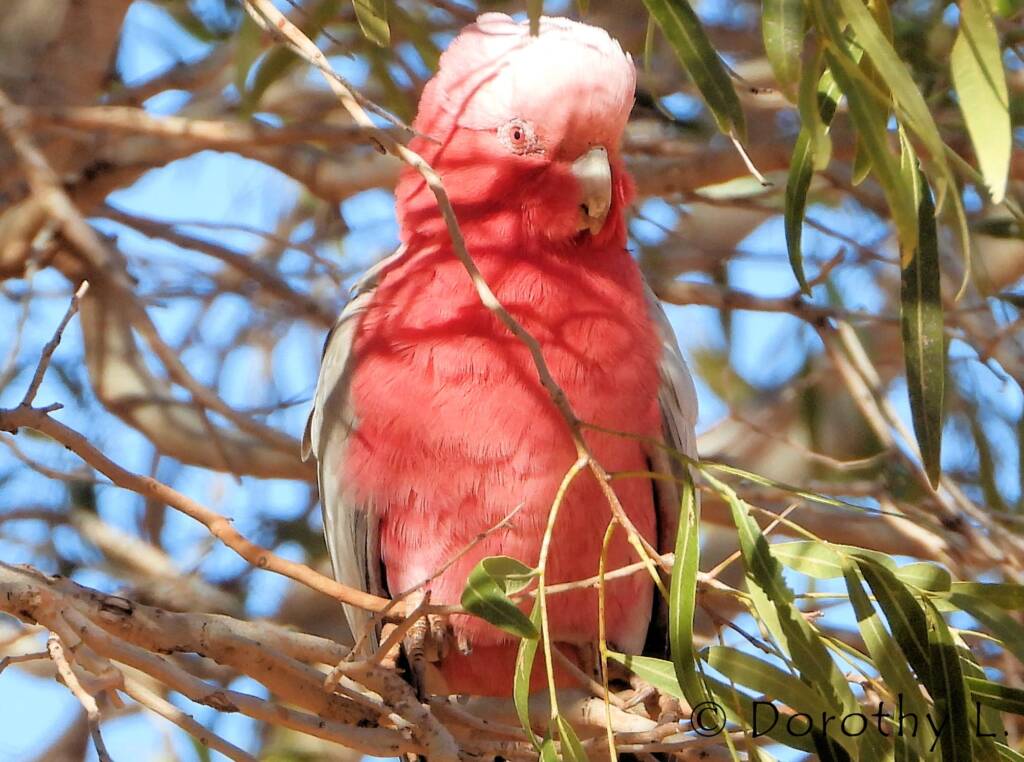
With their distinctive pink and grey plumage and their bold and loud behaviour, they are an interesting species to watch. Highly intelligent, you can sometimes see them swinging from telegraph lines, doing somersaults, hanging upside down, tumbling and wrestling with each other, playing like teenagers.
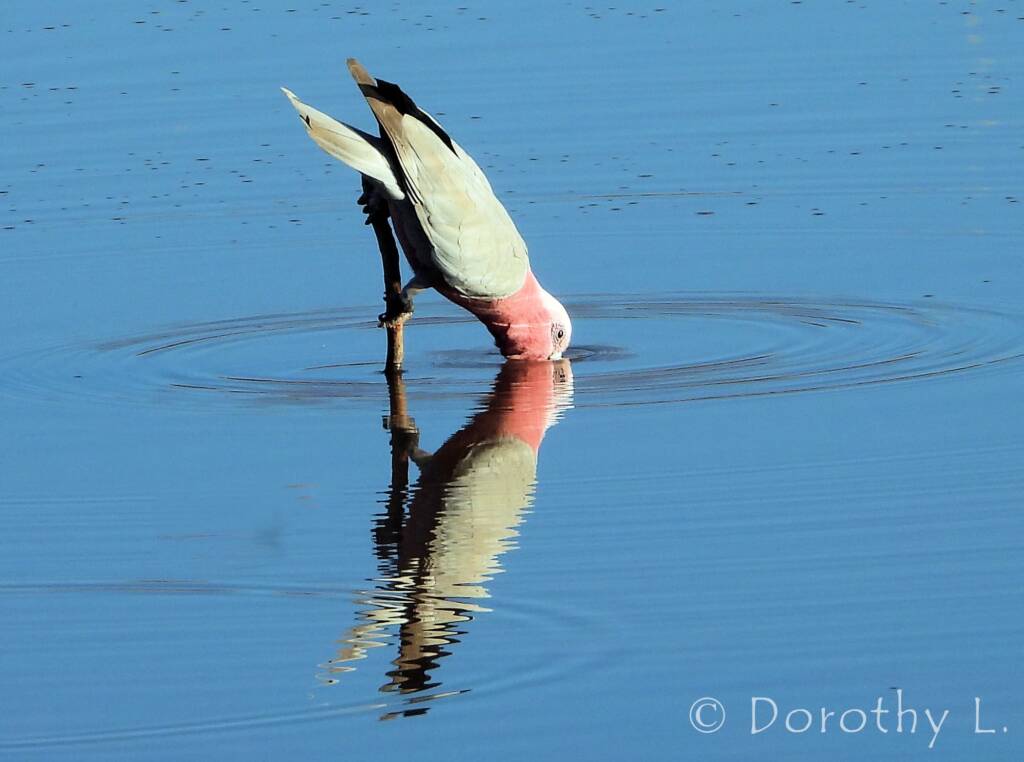
Galahs are monogamous and mate for life. During the courting period, the male Galah chirps and screeches in an effort to impress the female.
The Galahs usually make their nests in hollow parts of trees, with both parents sharing the nesting and parenting of their offsprings. The young Galahs have been known to stay with the parents for months to years.
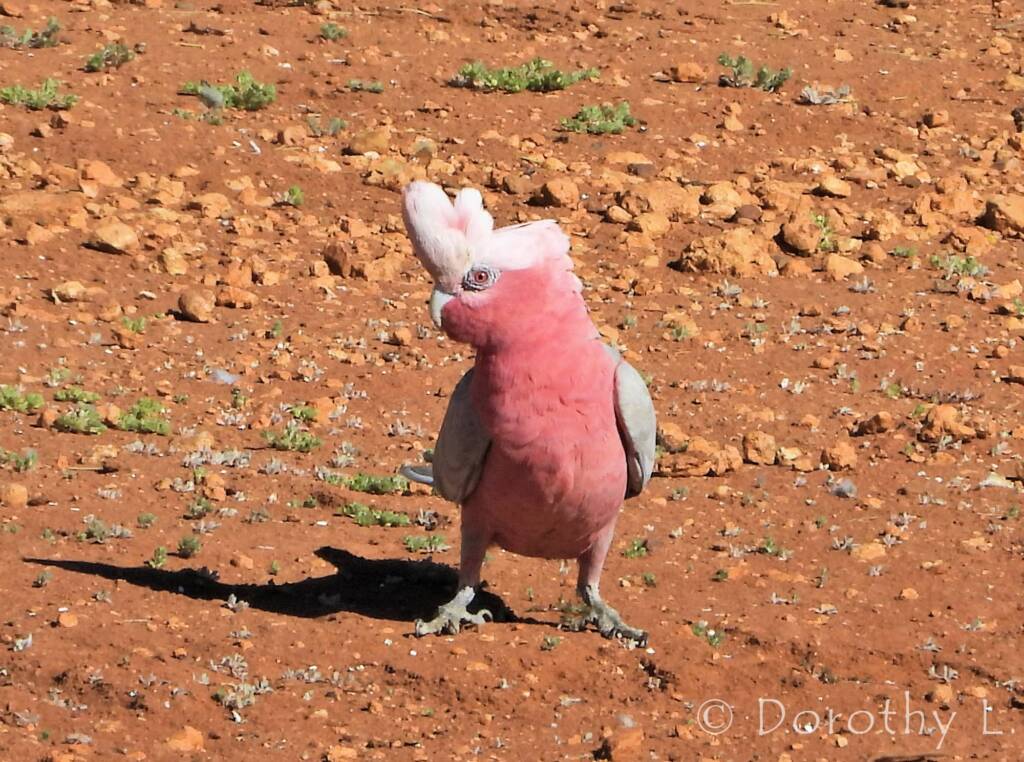
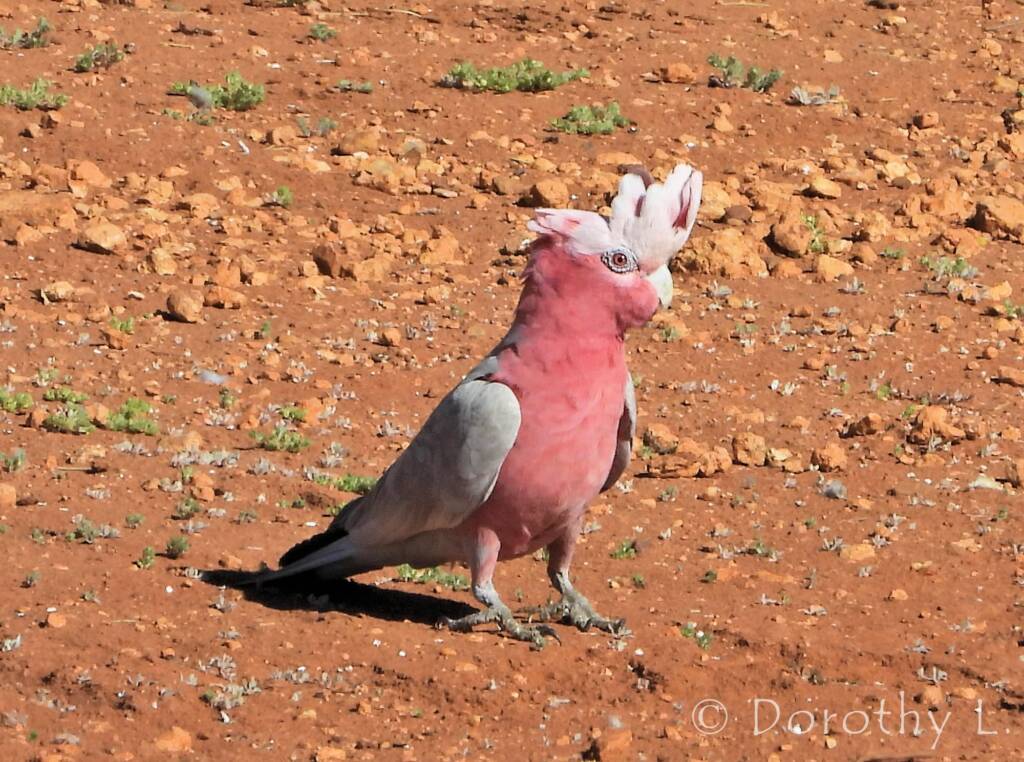
You can tell the difference between the male and female Galah by their eyes. The female Galah has pink eyes.
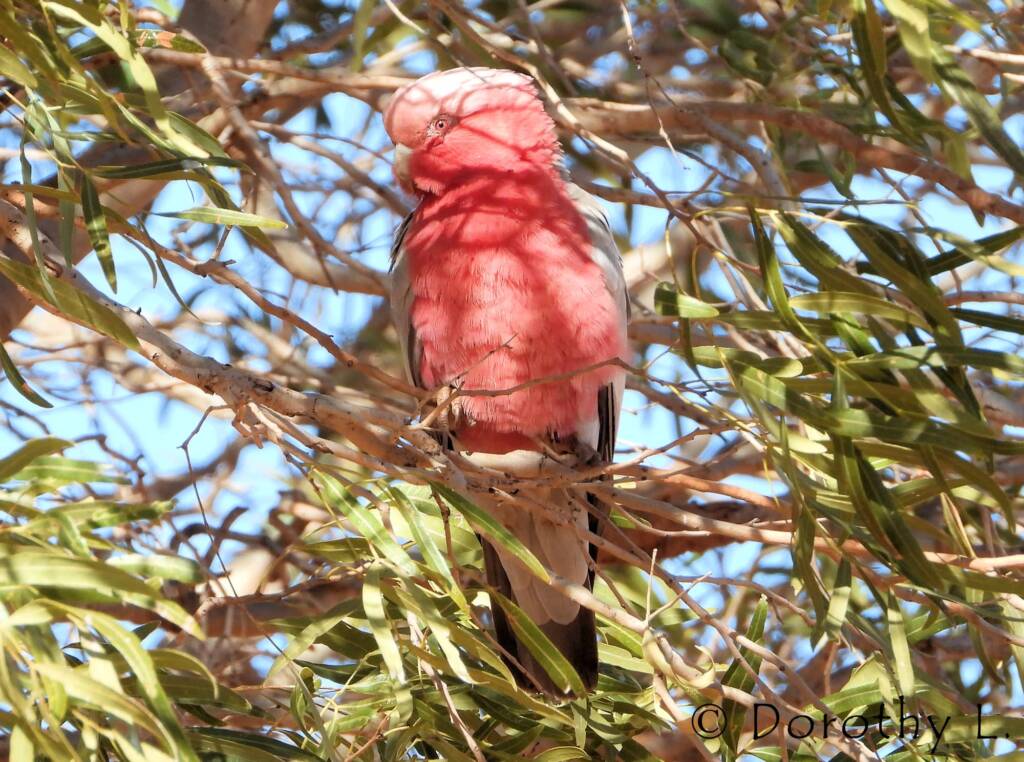
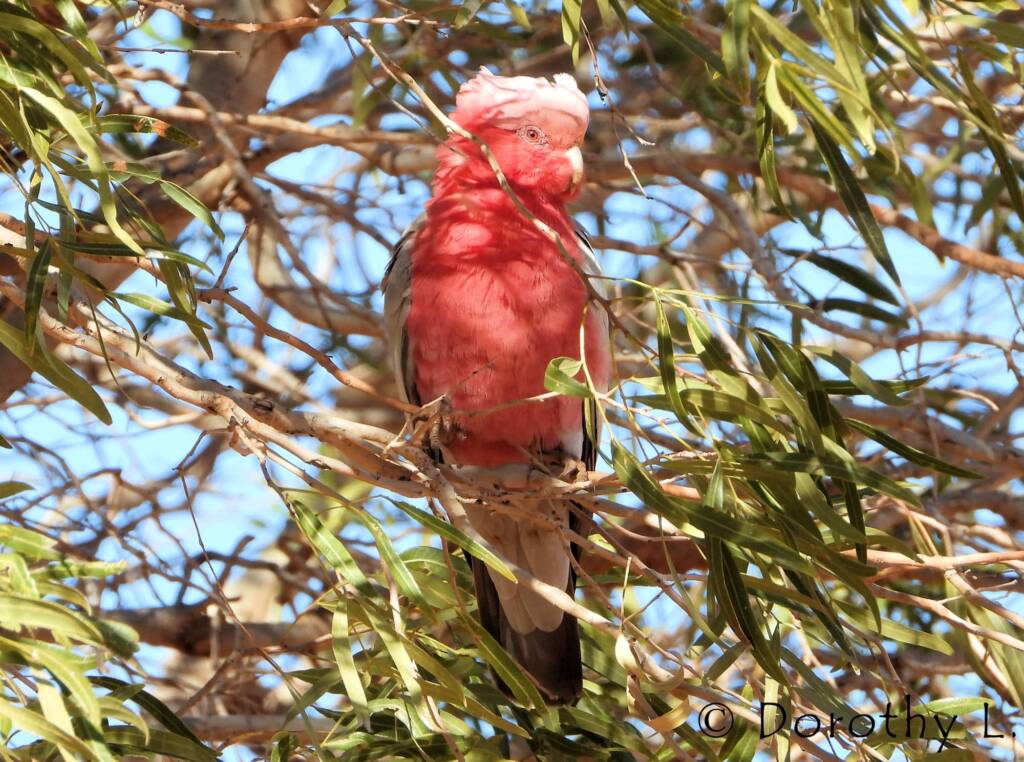

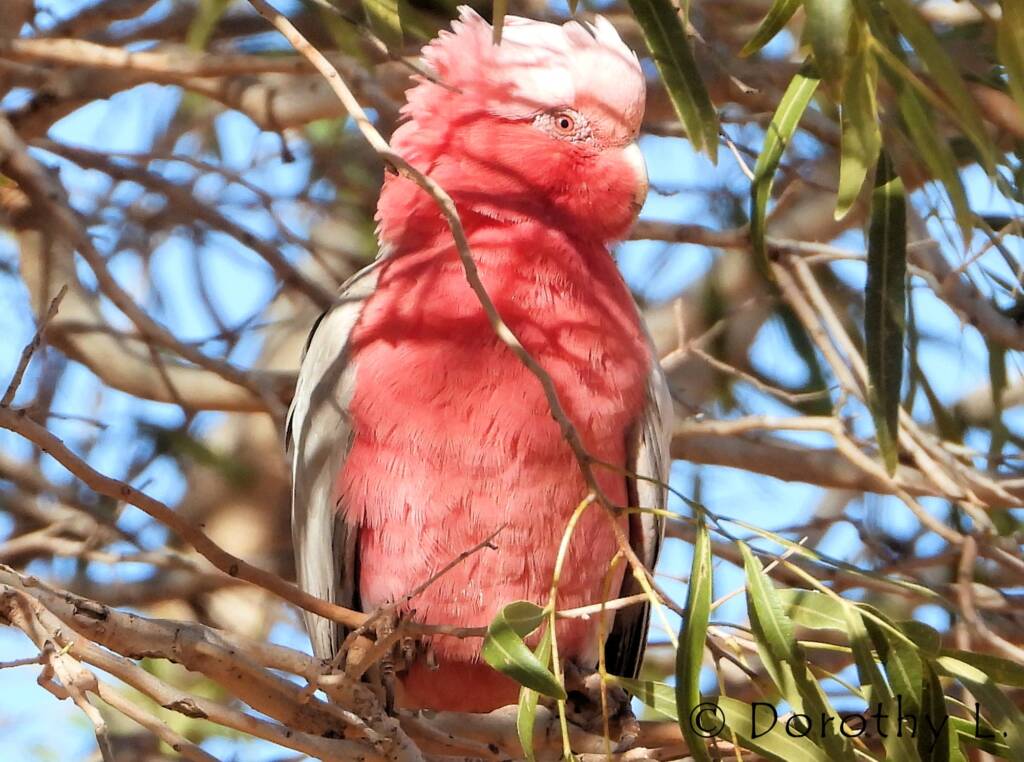
It is sad to see a galah killed (such as being hit by motor vehicles). When young galahs first learn to fly, they can often misjudge motor vehicles on the road and get hit, usually killed. The parents and even the siblings of the young dead galah, appear to get confused, and sometimes end up also getting hit. If the adult galah gets killed, it has been reported that the mate often remains in the area, as if in human terms, grieving. So if you see a flock of galahs, please slow down and take care when passing them.

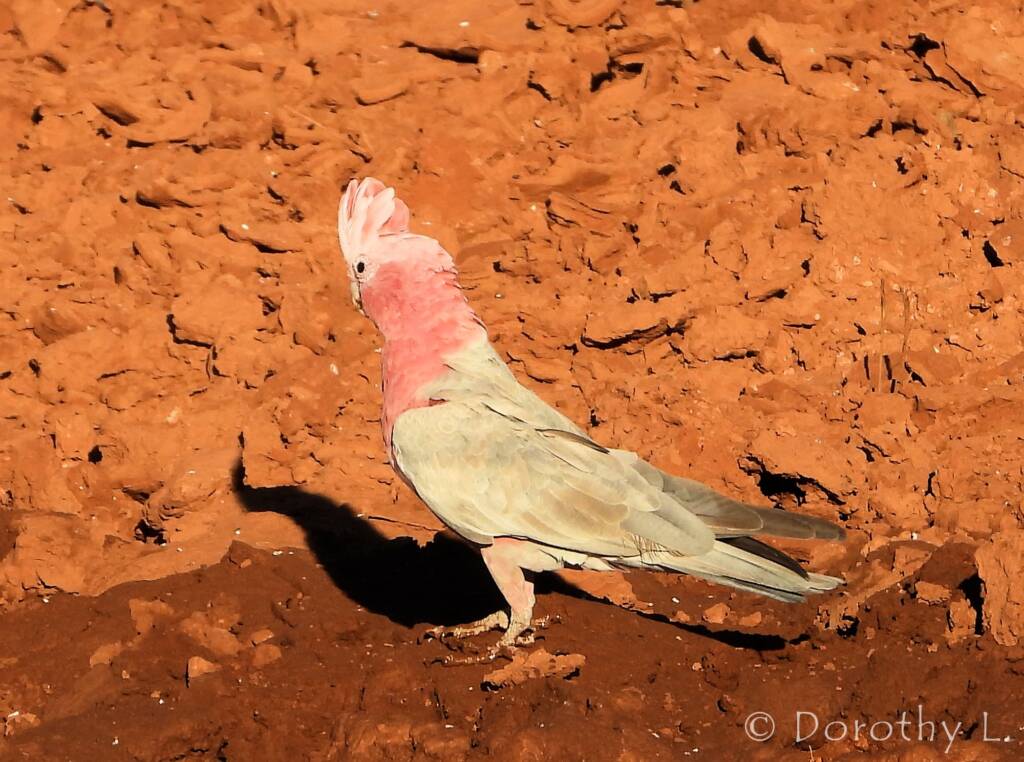
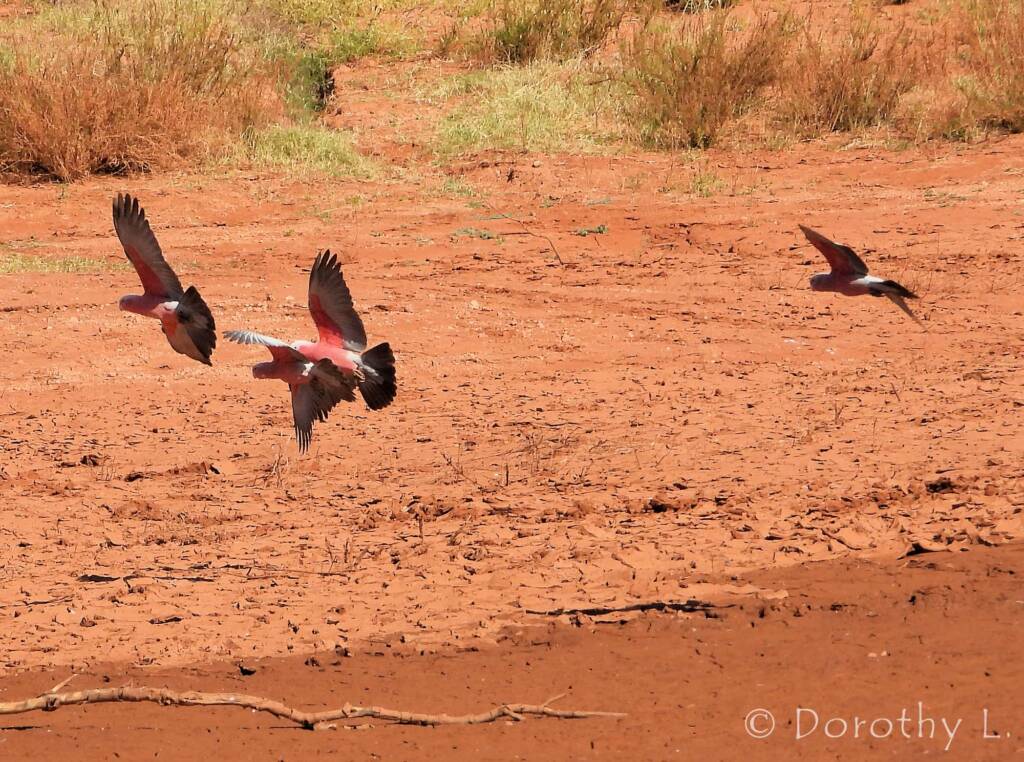
Galahs feed on seeds, mostly from the ground. They are often seen feeding on grass seeds, although they are also known to eat seeds from Australian shrubs and trees, including Acacias and Casuarinas. They are also known to eat the seeds of cultivated agricultural crops, making them a pest in certain regions. The Galah are important seed dispersers, carrying them to other areas, and sometimes dropping them intact or partially-eaten.

There are currently three subspecies of galahs. The subspecies are recognised by the slight variation that exists in the colours of the plumage and in the extent of the carunculation of the eye rings.
The south-eastern form, E. r. albiceps, is clearly distinct from the paler-bodied Western Australian nominate subspecies, E. r. roseicapilla, although the extent and nature of the central hybrid zone remains undefined. Most pet birds outside Australia are the south-eastern form. The third form, E. r. kuhli, found right across the northern part of the continent, tends to be a little smaller and is distinguished by differences in the shape and colour of the crest, although its status as a valid subspecies is uncertain.
Source: Galah, Wikipedia
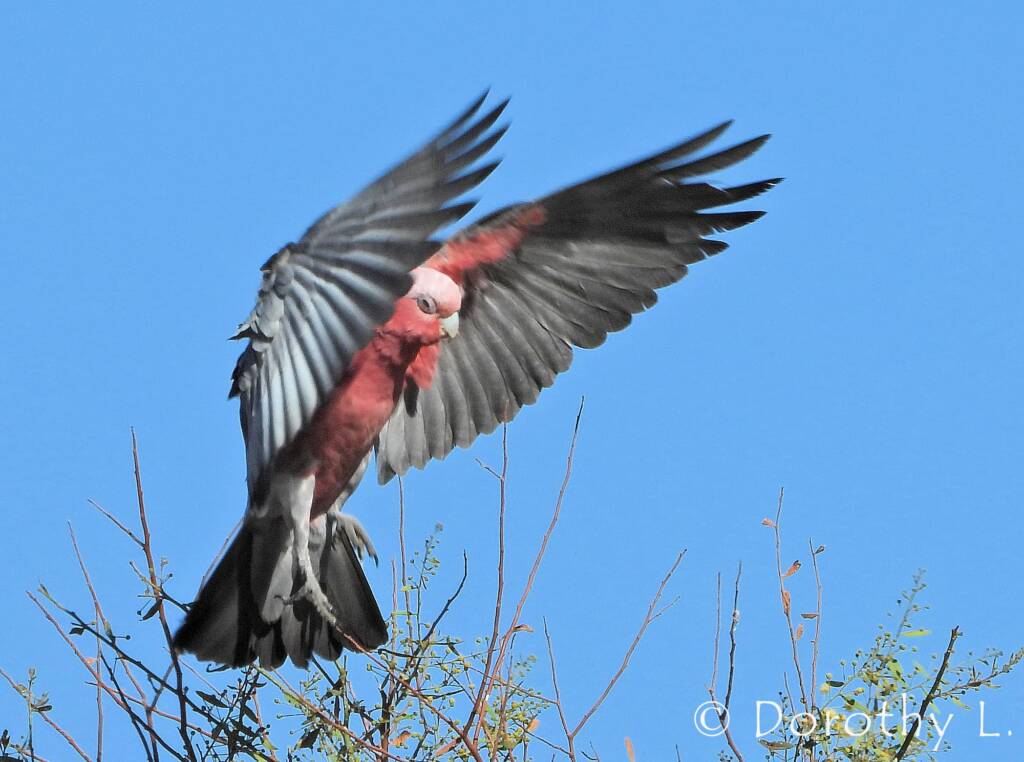
Common name
Galah, Pink and Grey Cockatoo, Rose-breasted Cockatoo. The word Galah comes from the gilaa, a word that is found in Yuwaalaraay and the neighbouring Aboriginal languages.
Galah is used in English to describe a stupid person, but also to describe in more friendly terms a silly person who is a bit of a clown.

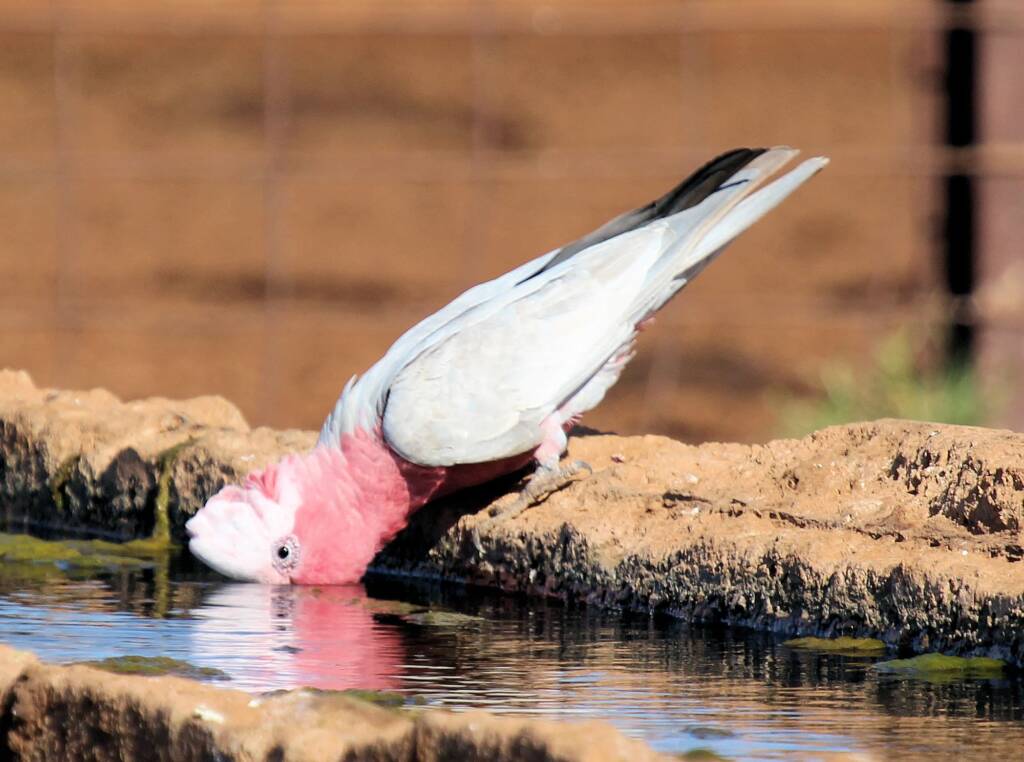

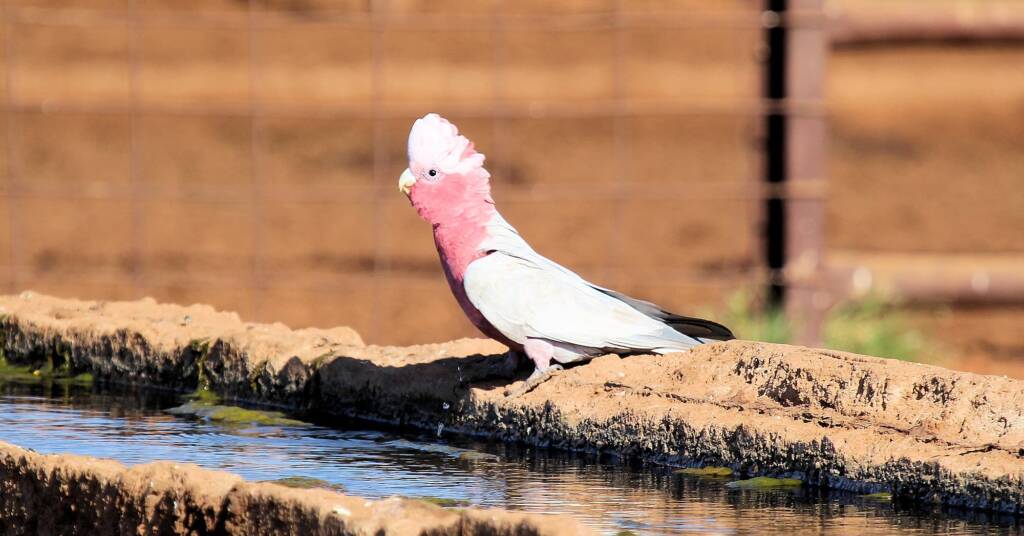
Art and Culture
Not only are Galahs popular birds, they are often depicted in numerous art work from street art, paintings and sculptural forms.
Whilst the word “cockatoo” is thought to come from the Dutch word “kaketoe“, that in itself is said to be an western adaptation from the Malay word, “kakatua“. The galah, who belong to the group of birds called cockatoos, is said to come from the Aboriginal Gamilaraay language. Another reference (listed in the footnote) describes it as coming from:
The word galah is a borrowing into Australian English from the Aboriginal Yuwaalaraay language of northern New South Wales.3
The origin of the name ‘Galah’, Dr Richard Nowotny


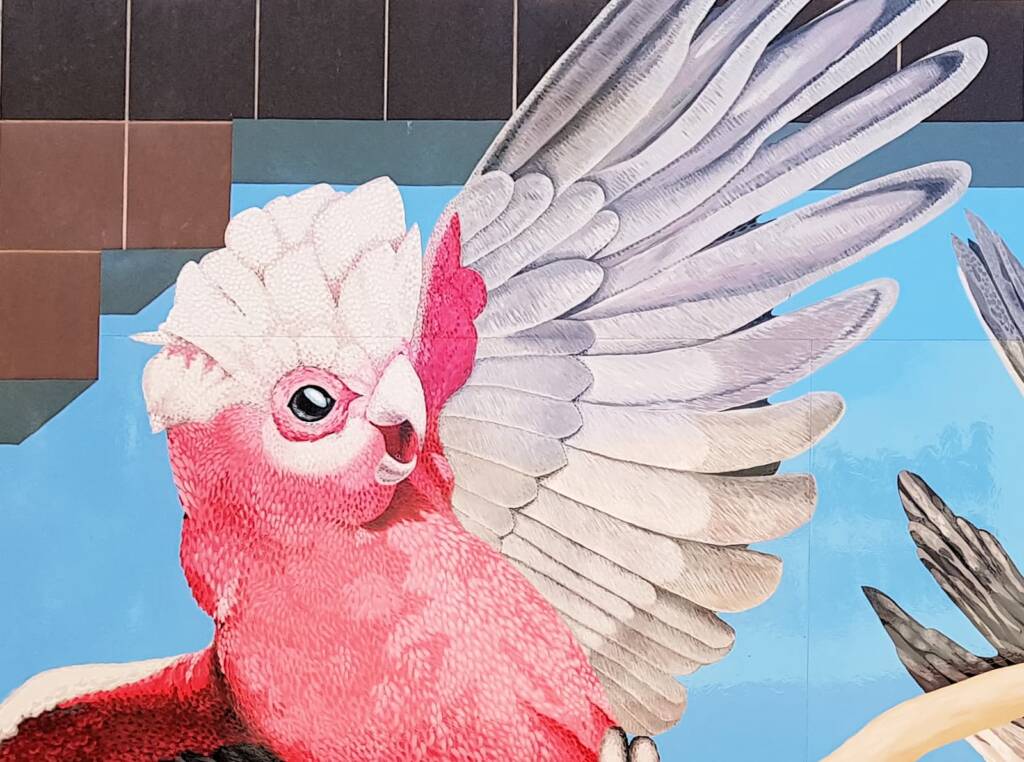
- Scientific classification
- Kingdom: Animalia
- Phylum: Chordata
- Class: Aves
- Order: Psittaciformes
- Family: Cacatuidae
- Genus: Eolophus
- Species: E. roseicapilla
- Binomial name: Eolophus roseicapilla
- Subspecies:
- E. r. roseicapilla
- E. r. albiceps
- E. r. kuhli
Footnote & References
- Galah, Australian Museum, https://australian.museum/learn/animals/birds/galah/
- Galah (Eolophus roseicapillus), BirdLife Australia, https://birdlife.org.au/bird-profile/galah
- The origin of the name ‘Galah’, Dr Richard Nowotny, http://bioacoustics.cse.unsw.edu.au/birding-aus/2007-12/msg00251.html
- Galah, Meanings and origins of Australian words and idioms, Australian National University, https://slll.cass.anu.edu.au/centres/andc/meanings-origins/g
- Words you thought were Indigenous that actually aren’t, 27 April 2018, NITV, https://www.sbs.com.au/nitv/article/2018/02/07/words-you-thought-were-indigenous-actually-arent-1
- Galah, Wikipedia, https://en.wikipedia.org/wiki/Galah
GalahGalah – water Galah – mate for life
ParrotsAustralian Ringnecks Bluebonnet Bourke’s Parrot Budgerigar Cockatiel Galah Major Mitchell’s Cockatoo Mallee Ringneck Mulga Parrot Port Lincoln Ringneck Purple-crowned Lorikeet Rainbow Lorikeet Red-collared Lorikeet Red-tailed Black Cockatoo Sulphur-crested Cockatoo Yellow-tailed Black Cockatoo
BirdsApostlebird Australasian Darter Australasian Figbird Australasian Gannet Australasian Grebe Australasian Pipit Australasian Robins Australasian Shoveler (Spatula rhynchotis) Australasian Wrens Australian Babblers Australian Bustard Australian Chats Australian Magpie Australian Pelican Australian Pratincole (Stiltia isabella) Australian White Ibis Bassian Thrush Black-faced Cormorant Black-faced Woodswallow Black Swan Bowerbirds Brolga Brown Songlark Channel-billed Cuckoo Cinnamon Quail-thrush Cormorants Cuckooshrikes and Allies Dotterels Lapwings Plovers Doves & Pigeons Emu Fairy Martin Finches Grey Fantail Grey Teal Honeyeaters Kingfishers Little Friarbird Little Grassbird Magpie-lark Masked Woodswallow Noisy Pitta Olive Whistler Paradise Riflebird Pardalotes Parrots Pheasant Coucal Pied Butcherbird Rainbow Bee-eater Raptors Rufous Fantail Redthroat Rufous Bristlebird Silver-crowned Friarbird Torresian Crow Waders Welcome Swallow (Hirundo neoxena) Whiskered Tern (Chlidonias hybrida) White-browed Woodswallow White Capped Noddy White-faced Heron White-necked Heron Willie Wagtail Yellow-throated Scrubwren
